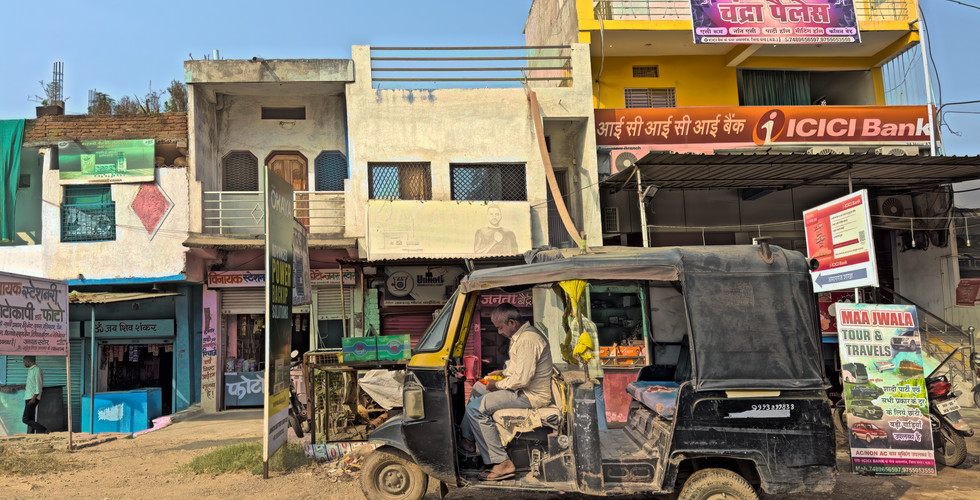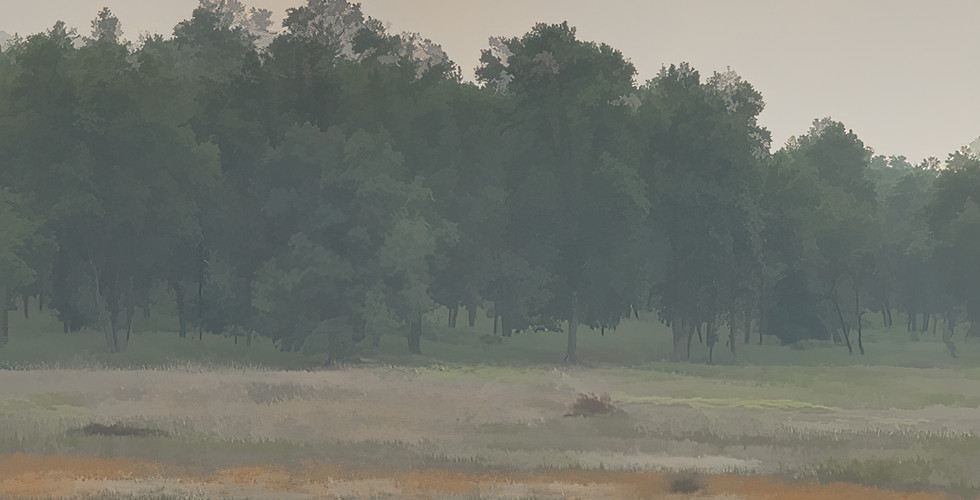Being a passenger on a road trip offers the rare luxury of gazing out the window and immersing oneself in the unfolding scenery. During my two lengthy car journeys through the Indian countryside, I had plenty of time to observe the villages and landscapes. However, before I could fully appreciate the scenery, I had to make peace with Indian driving habits—a task easier said than done.
Driving in rural India appears to follow its own unwritten rules. Cars often straddle the middle of the road, regardless of whether it’s a one-lane or two-lane path. This position allows drivers to veer quickly to the left or right to avoid an endless array of slower-moving obstacles—cows, pedicabs, tuk-tuks, dogs, pigs, motor scooters, overloaded trucks, random piles of stones, and even the occasional donkey or horse. I soon realized that the only way to remain calm as a passenger was to avert my gaze from the road ahead and focus on the side window instead.
Our caravan consisted of eight four-wheel-drive vehicles and one camper van, carrying 23 people in total. At first, this seemed like overkill—why not just use a single bus? But it didn’t take long to understand the reasoning. Indian buses are neither fast nor maneuverable. What took us seven hours by car would likely have taken far longer by bus and might have required an overnight stop or driving in the dark. In a land where cows reign supreme on the roads, driving at night is a risky proposition—cows don’t wear lights.
The camper van served a specific purpose: providing the women on the trip with a modest bathroom option equipped with a sit-style toilet. When we did stop, it was in isolated locations, where the men were simply told to “find a bush.” This arrangement stood in stark contrast to my recent travels in Japan, where rest stops with clean facilities and small shops were the norm. Once we left the confines of Agra and headed south, I didn’t see anything resembling an official rest stop. Even if there had been one, our guide was determined to spare us the discomfort of encountering a squat toilet or a less-than-clean washroom.
As we left the cities behind, the countryside opened up. Although the air was less hazy than in urban areas, it still carried a faint veil of pollution. I found the villages along the way far more captivating than the open countryside. Their vibrant colors and the entirely different way of life compared to the USA offered endless fascination.
Villages in India seem to nurture the independent spirit, with small-scale entrepreneurs setting up shop in modest structures or makeshift stands. While some buildings looked precarious, I had to admire their ingenuity—these structures, however fragile, were far better than anything I could construct myself. Building codes, if they exist, are clearly not enforced. Yet this lack of regulation enables widespread entrepreneurship, giving people a means to earn a living. It’s a refreshing contrast to the tightly controlled environments I’m accustomed to.
Our caravan never stopped in any of the villages. Instead, we breezed through, barely slowing down, as one vibrant scene after another passed by. I found myself transfixed by the kaleidoscope of activity and color—an unfiltered glimpse into rural Indian life. Pressing my phone to the window, I captured a few fleeting moments of these villages. Once home, I selected my favorite images and used filters in Topaz Studio to transform them into painterly impressions, a way to preserve and share the essence of rural India.
Slideshow. Click the arrows in the top right to expand the window. (Otherwise, some images may be cropped.) Then click the right arrow to move through the images.




















留言